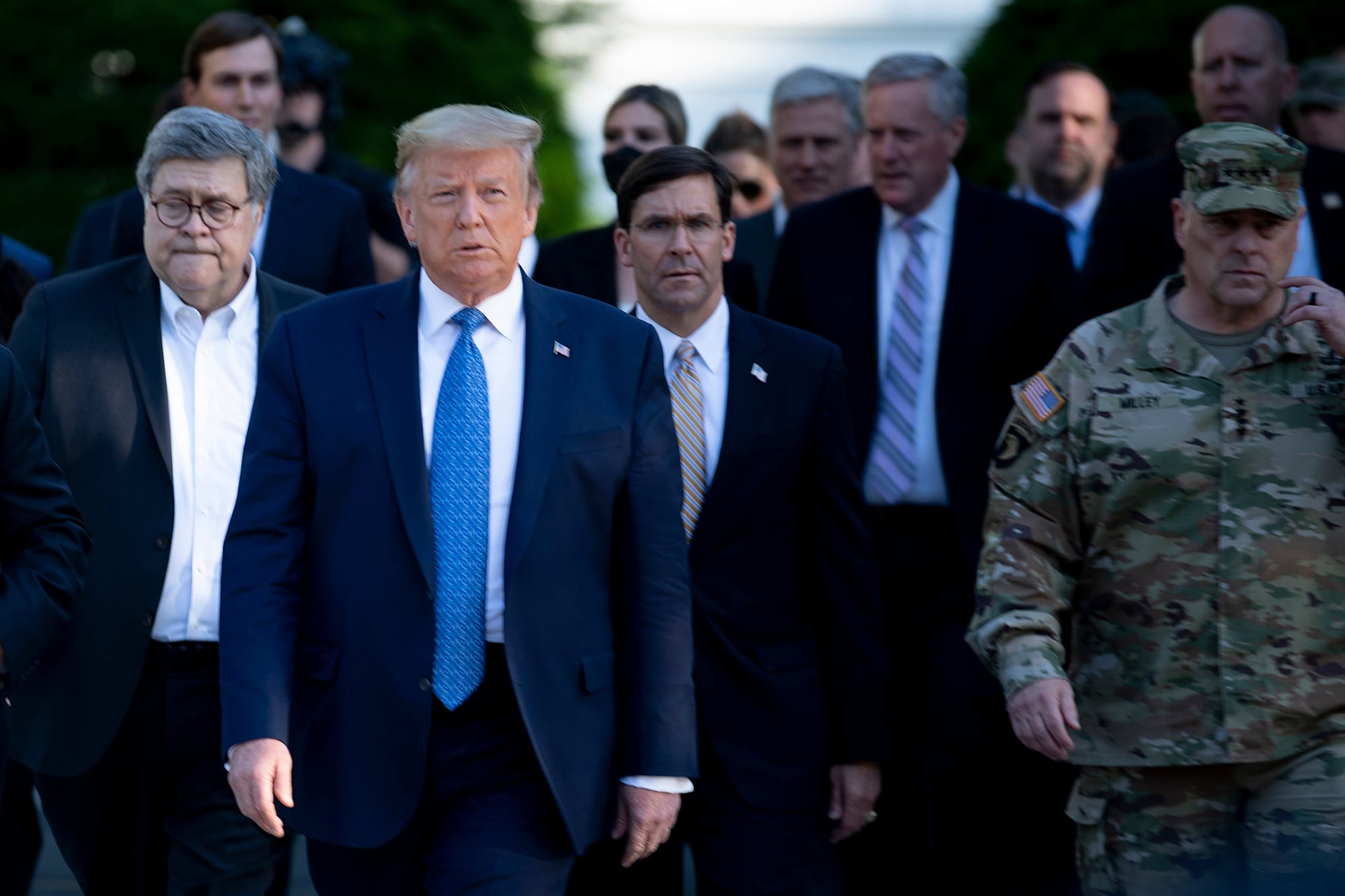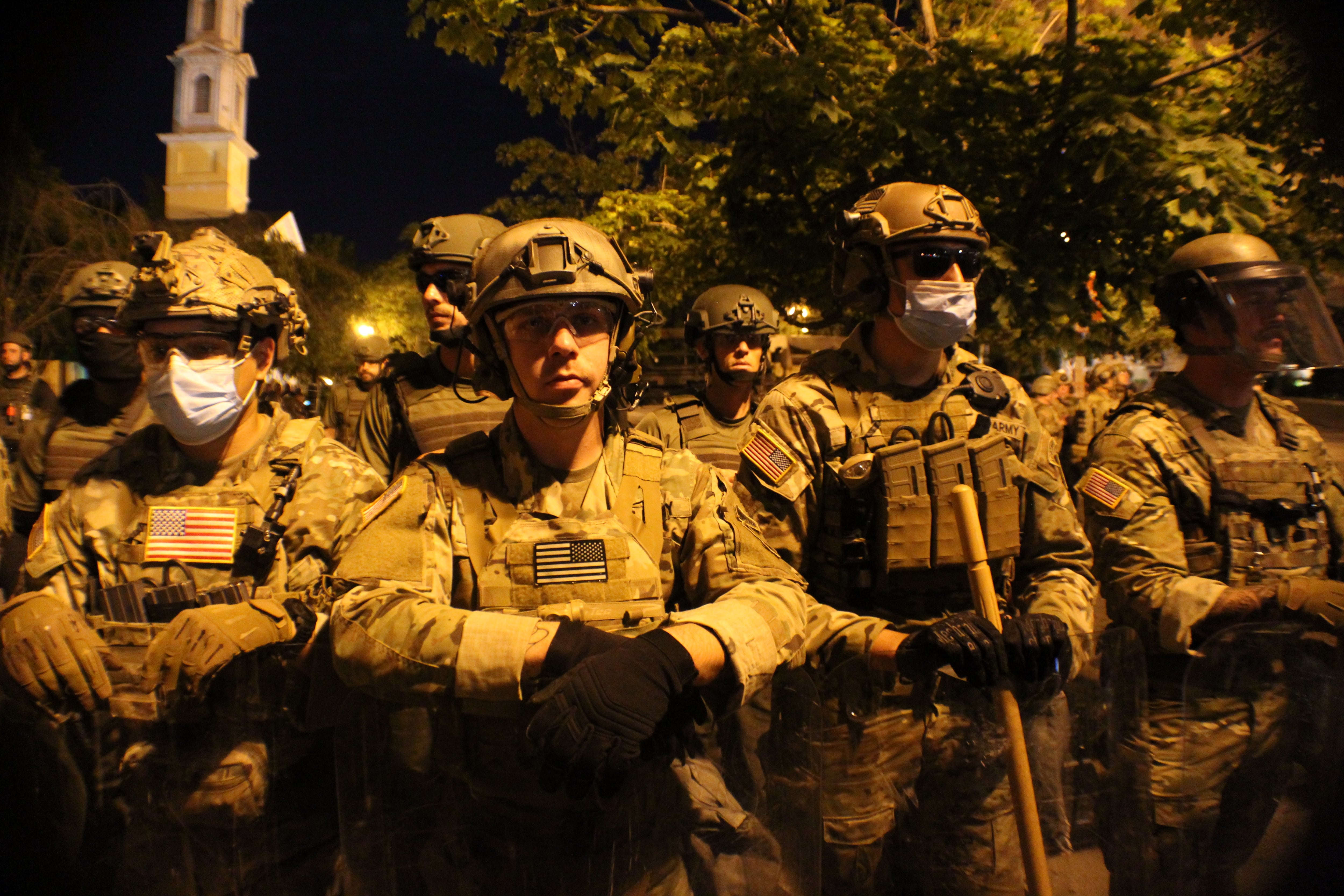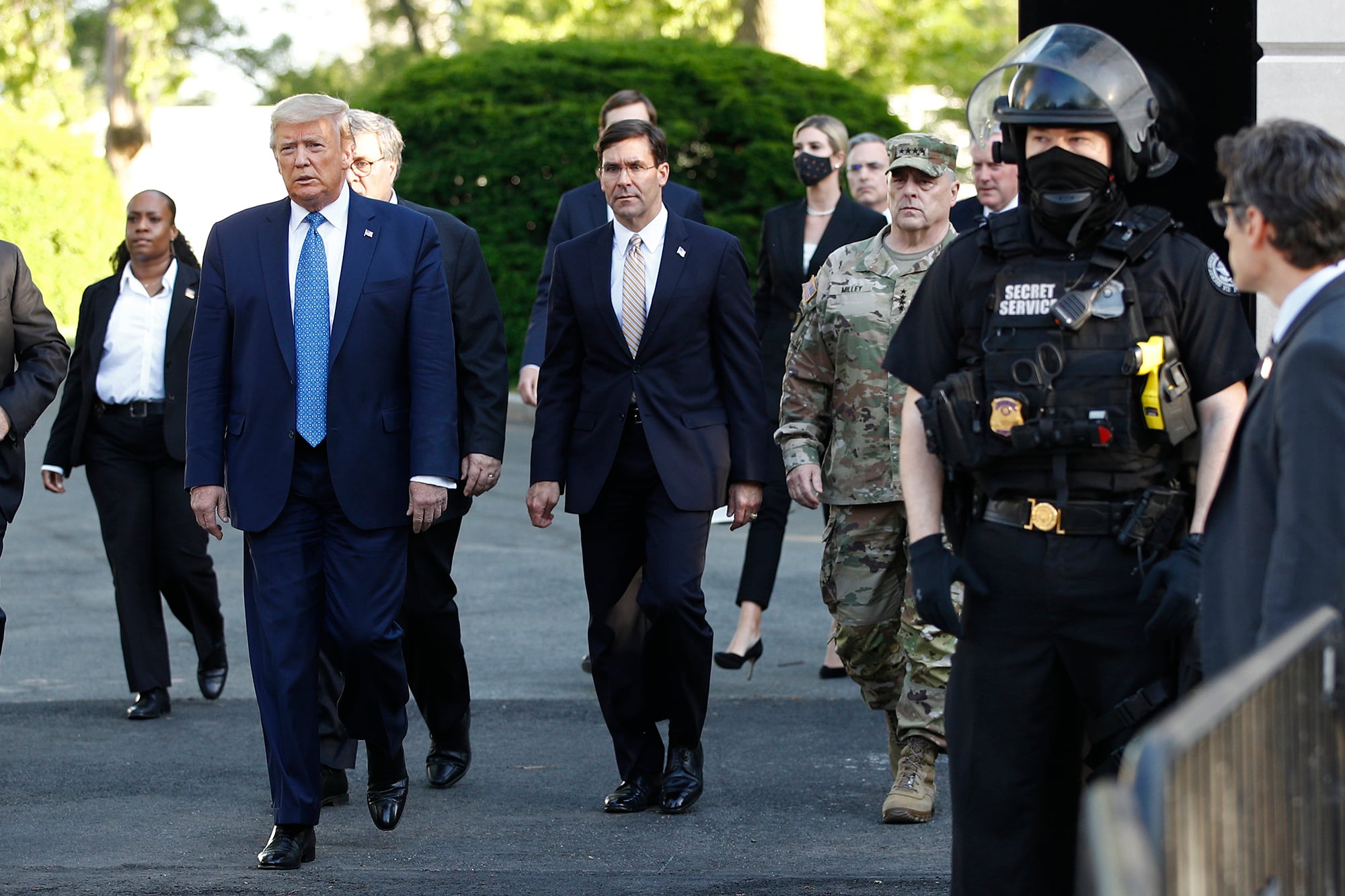An Army National Guard major working alongside federal officers on protest control during the June 1 demonstrations outside of the White House testified Tuesday that military members there were left upset and confused by the violent force used to clear out the area ahead of a presidential photo op.
“I struggled to process what had taken place … I knew something was wrong,” Maj. Adam DeMarco told members of the House Natural Resources Committee. “I started talking to my fellow service members, and they were expressing many of the same consternation and concerns.
“I was surprised at the timeline of events, and the escalation of events.”
DeMarco, a West Point graduate who served overseas during Operation Iraqi Freedom, was the primary liaison between the Washington, D.C. National Guard and U.S. Park Police charged with responding to unrest on June 1 at Lafayette Square, just a few yards away from the White House.
RELATED

The law enforcement response that afternoon, which took place just a few minutes before President Donald Trump’s appearance outside St. John’s Church (the site of violence the evening before), has become a partisan firestorm in recent weeks.
Critics have accused the White House of infringing on citizens’ right to protest to help the president’s political standing. At Tuesday’s committee hearing, U.S. Park Police Acting Chief Gregory Monahan testified that the president’s appearance had nothing to do with the decision to clear the area of protesters, and dismissed concerns that the tactics and equipment used were overly violent.
“The assertion that these were peaceful protests are ignoring the facts,” he said. “There were assaults on police officers and arson … we saw sustained violence from bad actors.”
Attorney General William Barr, testifying at a separate hearing across Capitol Hill on Tuesday, said the situation was so unstable he recommended the president enter the secure White House bunker as a precautionary measure.
But DeMarco disputed those accounts, saying he saw only minor problems between law enforcement and protesters ahead of the decision to clear the square.
DeMarco testified that Joint Chiefs Chairman Gen. Mark Milley (who later drew criticism for walking with Trump during the photo op) " told me to ensure that National Guard personnel remained calm, adding that we were there to respect the demonstrators’ First Amendment rights.”
RELATED

He praised his fellow Guard members for “acting honorably” — the military forces did not perform any clearing activities — but also had concerns with what he called a lack of warning and respect for the protesters.
“Restraint does not involve the use of equipment as weapons,” he said.
Park police and other federal agents said they used smoke bombs, pepper balls and other non-lethal means to disperse the crowd. DeMarco said he recognized tear gas canisters in the area after the protesters were forced back, and said that riot shields and other pieces of equipment were used too aggressively by some officers.
DeMarco’s testimony was praised by Democrats on the panel and attacked by Republicans, some of whom accused the Guardsman — a former congressional candidate — of using the forum to advance his own political ambitions.
Rep. Louie Gohmert, R-Texas and an Army veteran, attacked both DeMarco and Milley for speaking publicly on the incident, implying that they were trying to undermine civilian control of the military.
“This is a different military than the one I served in,” he said. “I’m trying to get used to the new military where you don’t feel an obligation to answer to the civilian commander in chief.”
Both Park Police and White House officials have denied that Trump ordered the square cleared for his photo op, calling the timing coincidental.
DeMarco said he could not speculate as to why the area was cleared of protesters less than an hour ahead of a planned curfew, but said the reasons given after the event were not communicated to his personnel at the time.
Guard officials have made counselors and other support services available to troops involved in the protest response efforts, a move which DeMarco highlighted as encouraging.
Leo covers Congress, Veterans Affairs and the White House for Military Times. He has covered Washington, D.C. since 2004, focusing on military personnel and veterans policies. His work has earned numerous honors, including a 2009 Polk award, a 2010 National Headliner Award, the IAVA Leadership in Journalism award and the VFW News Media award.





